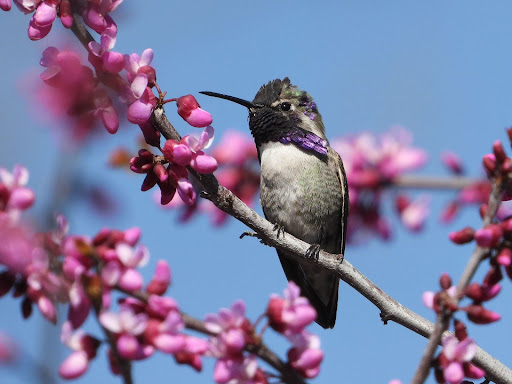Special Status Species Surveys: Protecting Rare and Sensitive Wildlife
At SummitWest Environmental, we specialize in conducting Special Status Species surveys, providing our clients with critical information to ensure compliance with environmental regulations and the protection of sensitive wildlife.
Our experienced biologists head into the field equipped to identify rare plants, mammals, birds, amphibians, fish, and invertebrates—each with unique habitat requirements and survey protocols.

Wolf’s cholla (Cylindropuntia wolfii) thriving in the Sonoran Desert of California. This species is currently listed with a California Rare Plant Rank of 4.3, It has a limited distribution but is not considered to be under significant threat.
What Happens During a Special Status Species Survey?
Before heading into the field, biologists conduct thorough research on the project area and the species that may be present. Reviewing job packages provided by the prime client, they analyze ideal habitat conditions, nesting or burrowing behaviors, vocalizations, tracks, and other identifying signs. This preparation allows them to recognize species-specific indicators and make informed observations.
For protocol-level surveys for listed species (endangered or threatened), our team of biologists and managers reviews the USFWS (spelling this out) species survey protocol and plans out the survey season. This can include sending in a Survey Preactivity Notification to USFWS prior to surveys commencing, preparing GIS maps and customized datasheets, and scheduling surveys. Many surveys are weather dependent, so flexibility and last minute changes are a part of the job.
Once on-site, biologists use specialized gear such as binoculars, spotting scopes, butterfly nets, hand lenses and field guides to aid in identification. Depending on the species, survey durations can vary. For example, a Burrowing Owl survey may extend up to four hours of evidence of activity—such as feathers, whitewash, pellets, or tracks—is found. The presence of these signs triggers additional monitoring to ensure accurate assessment.

A Costa’s Hummingbird (Calypte costae) perched among vibrant spring blossoms.
The Importance of Accurate Identification
Detecting and documenting rare species is a critical part of our work. When a biologist confirms the presence of a Special Status Species, they immediately communicate findings to both the SummitWest team and the prime client. This information allows for adjustments in construction timelines, implementation of protective measures, and, when necessary, postponement of work to prevent environmental harm.
Our team takes pride in these surveys, as they provide a rare opportunity to observe and document some of California’s most unique and sensitive species. From the majestic Golden Eagle to the elusive Southern Rubber Boa, our biologists have encountered a diverse array of wildlife, including:
- Birds: Burrowing Owl, California Gnatcatcher, Least Bell’s Vireo, White-tailed Kite, Bald Eagle
- Mammals: Stephens’ Kangaroo Rat, San Bernardino Kangaroo Rat, Spotted Bat, Western Mastiff Bat, Mohave Ground Squirrel
- Reptiles & Amphibians: Desert Tortoise, Arroyo Toad, California Red-legged Frog, Western Pond Turtle, Two-striped Gartersnake, Foothill Yellow-legged Frog, Coast Horned Lizard
- Plants Western Joshua Tree, Santa Susana Tarplant, Slender Mariposa Lily, find more to add here!
Invertebrates:, Crotch’s Bumblebee, vernal pool fairy shrimp, quino checkerspot butterfly, Monarch butterfly

Our biologists attend workshops to refine their identification and handling techniques—here’s a photo from a SummitWest Biologist who attended a Western Toad (Anaxyrus boreas) workshop.
Why These Surveys Matter
Special Status Species surveys are essential for balancing infrastructure development with environmental responsibility. By identifying and protecting rare species, SummitWest Environmental helps ensure compliance with regulatory requirements while preserving biodiversity for future generations.
Whether in the rugged backcountry or along a busy roadside, our biologists remain dedicated to safeguarding the natural world—one survey at a time.

